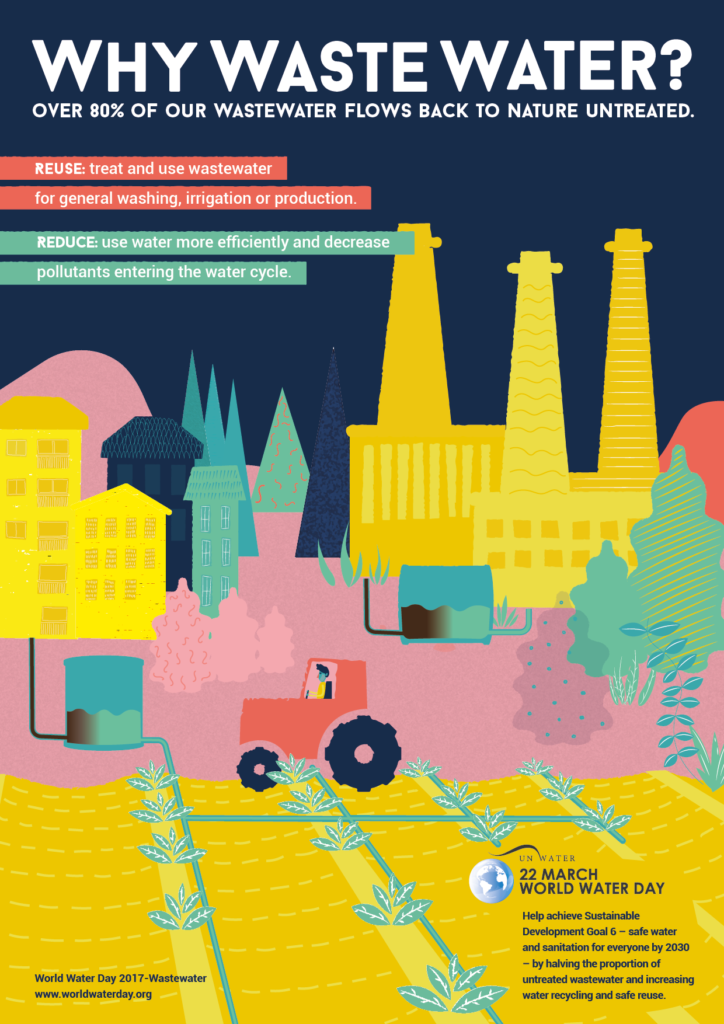World Water Day asks: Why waste water?
March 21, 2017Wednesday, March 22 is World Water Day. This year’s theme is wastewater — or, more specifically, wasting water.
It’s a topic that’s definitely worth a deeper look. Here are some quick facts and figures from World Water Day: (For even more, click on this downloadable World Water Day fact sheet)
- More than 80 percent of wastewater around the world is sent, untreated, right back into the ecosystem — where
 it spreads pollution.
it spreads pollution. - 1.8 billion people are using water that’s been contaminated with feces, putting them at risk of contracting cholera, dysentery, typhoid and polio. It causes about 842,000 deaths every year.
- 663 million people around the world lack a safe, clean source of drinking water.
- Safely managed wastewater is an affordable, sustainable source of water, energy, nutrients and other recoverable materials.
- The costs of wastewater management are greatly outweighed by the benefits to human health, economic development and environmental sustainability – providing new business opportunities
As the world’s population increases, so does the amount of wastewater we produce. At the same time, our need for water is increasing. By 2030 — just 13 years from now — global demand for water is expected to grow by 50 percent. To meet that demand, new techniques for wastewater collection and management will be needed.
While that might sound frightening, “new” can, in many cases, mean “new to you.” For instance, in St. Petersburg, Florida, there’s been a dual distribution system that delivers reclaimed water in place since 1977. It consists of a parallel network of pipes — separate from potable water mains — that serve a mix of residential properties, and commercial and industrial parks. They can use the recycled water for things such as irrigation, laundry, vehicle and building washing, and ornamental water features.
Take a few minutes to read the entire fact sheet by clicking the link above. When you’re done, think about ways you can help — either by reducing the amount of water you use, finding ways to recycle some of the water you use, or even suggesting new ideas about water use at your workplace. Who knows — maybe your idea will be the one that helps to save our world’s water.
Teachers, if your class is doing something for World Water Day, download the printable World Water Day Certificate for your students.